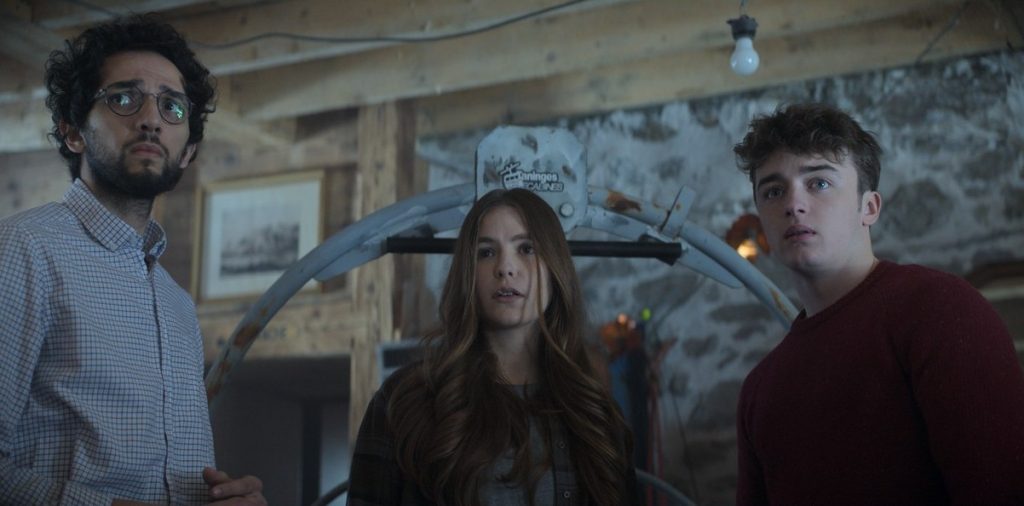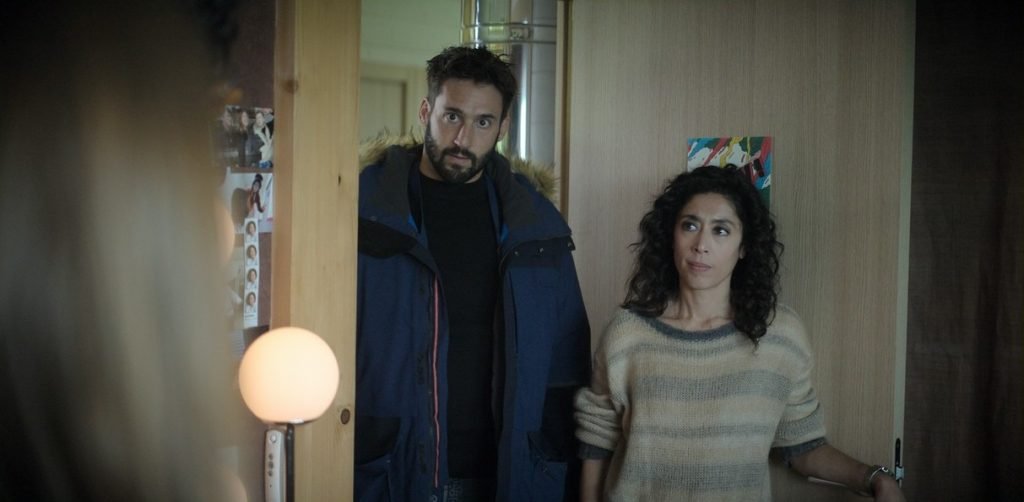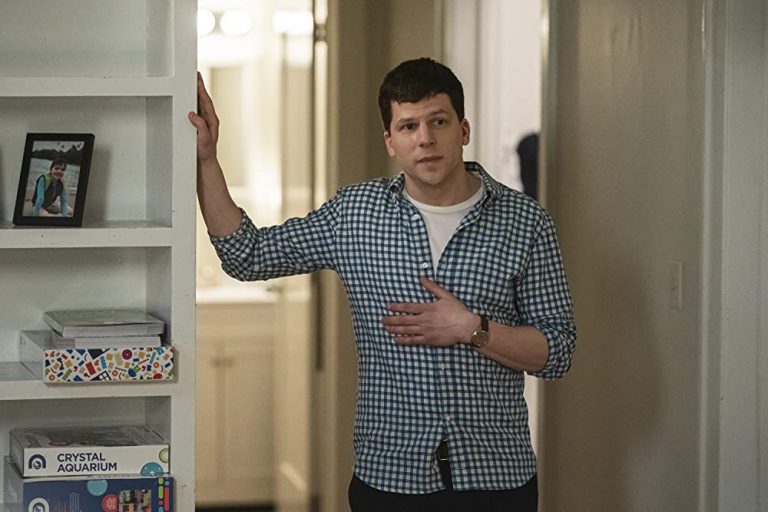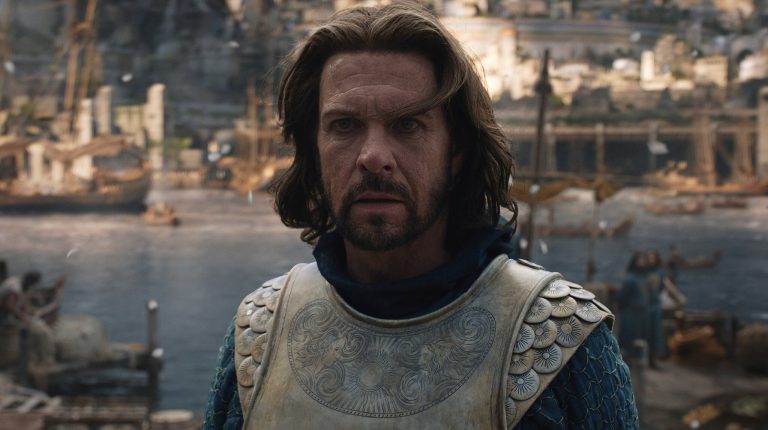Parallels (Season 1) Recap & Ending Explained: When the German series Dark (2017-2020) by Barban bo Odar and Jantje Friese first surfaced in Netflix it was positioned as a European counterpart to Stranger Things (2016–). Maybe because it revolved around bunch of teenagers set in a 1980s small-town. But soon, we learned that they both are completely different series. While Stranger Things offered entertaining nostalgia-driven content, Dark was an unrelentingly complex time-travel saga that posed major questions about human nature. The six-episode French series Parallels (2022- ) that has just arrived in Disney+ Hotstar might be dubbed as ‘Stranger Things meets Dark’. ‘Parallels’ isn’t as fun as the former or as complex as the later. Yet it has its own interesting characters, engaging themes, and a binge-watchable quality.
LHC and the Time-Travel Myth
The dread and tensions over energy politics in the era of nuclear power is the basis of Dark and the conflicts that unfolds in the fictional town, Winden. The panic and paranoia of the Cold-War era lies beneath the events in Stranger Things. In Parallels, the fear of unknown is very contemporary: Large Hadron Collider built by CERN – European Council for Nuclear Research. This largest and highest-energy particle collider or atom smasher that forms a 27-kilometre ring under the French-Swiss border is designed to learn the fundamental science at its most basic. Sounds simple, huh? Without getting much into the perplexing science, let me say that it’s one of the minuscule steps taken to comprehend the gigantic puzzle called universe.
By the time the physics season started at CERN in 2016, lot of conspiracy theories popped up, ranging from LHC creating black holes, splitting the universe to time travel. Theoretically, LHC could be a time machine. But definitely not in the ‘Back to the Future’ sense. Some could say we are already living in an alternate universe. Sometimes it’s hard to dispute that claim. Nevertheless, what if LHC experiments create a vortex that sends people to parallel universes? That’s the basic premise of this teen sci-fi series.
Parallels (Season 1) Recap:
In the prologue of Parallels that’s set in 2011, we see a kid on crutches playing with his dog. Soon the kid disappears whereas the dog becomes a puppy. While we figure out the implications of it, the narrative moves to 2021 and introduces us to four ordinary small-town teens. Samuel and Victor are brothers. They are from a well-to-do family. But their parents are controlling and remain clueless about their sons’ feelings. Bilal is the curly-haired nerd, who is brought up by his beloved single mother, Sofia. Sofia works at ERN and closely monitors the LHC experiments. Romane hails from a working-class family. Her mom works as a cashier at a local store and is in a toxic relationship with a man named Herve. Romane has a little step-sister named Camille with whom she is very close.
Romane and Sam are mutually attracted towards each other, whereas Bilal is carrying his unexpressed love for Romane. The four teenagers huddle together after school and promise to meet up later at the abandoned bunker to celebrate Bilal’s birthday. It’s March 21, also the day of the experiment at ERN. Once they all settle down in the bunker, Sam and Romane are about to go for a kiss. A weird power cut and seconds later, Romane, Bilal and Victor are gone. Instead, an adult version of Bilal wakes up in the bunker, freaking out Sam.
Related to Parallels (Season 1): The Adam Project [2022] ‘Netflix’ Review: Ryan Reynolds-led Time Travel Movie Shines When It Wants to Be Heartfelt
Naturally, the disappearance confounds everyone including the parents and the lead police officer Retz. Unlike Dark, Parallels doesn’t show us where the disappeared three go. It rather introduces us to a parallel universe, where Sam and Bilal have disappeared. In this parallel universe, Romane and Victor are alone and alienated for four years. Until, they think the bunker and the upcoming experiment at the ERN might provide some answers. Instead, it offers more complications actually as the slightly older Romane and Victor end up in 2021 on March 22nd.
Why the adult Bilal from 2035 came back to 2021? What happened in his parallel universe and why doesn’t he retain any memories of his adult life? The concept of past, present, and future doesn’t exist in a strict linear format within the parallel universes, which was already shown in Dark. Yet for narrative’s sake, we need such categorizations for our comprehension.
A Limited Time Travel Loop with Few Interesting Character Conflicts:
In Dark, time travel loops keep creating events that seem to have no origin or an endpoint. The inherent paradoxes and contradictions of time travel bring a level of plausibility. We need a genealogical and timeline chart to comprehend the ripple effects of time travel on the inhabitants of the small town. Each of the six episodes of Parallels runs just over 30 minutes and doesn’t intimidate us with such bizarre paradoxes (at least not yet!). It gives a sense that not everything is predestined. Created by Quoc Dang Tran, Parallels explores some of the complexities involved in such a scenario. At the same time, it sort of promises us teary-eyed reunions and closure. The show is rated 7+. Though it’s not necessarily for kids, the rating somehow indicates that it won’t take any darker turns.
One interesting conflict in Parallels is that of older Romane traveling back to 2021. Each of the returning characters, i.e., Bilal, Victor, and Romane, try to change their past irrespective of the warnings from Sofia. But Romane’s need to change the past is understandable since she loses her mom in 2025, and her cunning step-father Herve threatens to move away with Camille. Since she stands to lose everything, Romane desperately makes her move in 2021.
Sofia, the problem solver, naturally becomes the key character in the whole scenario. I love the way how her character was written and the mother-son relationship is so elegantly portrayed. From a narrative standpoint, Sofia is eventually there to explain to us the complexities of the science that causes this so-called anomaly during the LHC experiments. But her character arc and inner conflicts are developed in a relatively organic manner. Naidra Ayadi also brilliantly plays Sofia, rightly balancing between the character’s emotional investment and intellectual pursuit.
Perhaps, the biggest conflict in Parallels is Victor gradually embracing the darker side. Though it’s not explained in this season, Romane and Victor develops strange super-powers after their journey through time. Victor’s power seems more destructive and he could become the biggest obstacle in fixing the timelines. Victor is enraged because he feels unloved, whereas Sam is the wonder kid in their parents’ eyes. Since the brothers’ parents are rendered in a caricaturist manner and because Victor’s story-line is inorganic, the conflict didn’t hold my interest. In fact, I wondered why the makers rely on the superpowers to create an external conflict while the inherent conflicts attached to time travel are more intriguing. Maybe, we’d have more answers in the 2nd season.
Parallels (Season 1) Themes and Ending Explained:
Parenting is a predominant theme in Parallels. Sofia as mentioned earlier is the ideal parent and a gifted individual. Trust is an essential element in the parent-child relationship. That’s found in abundance in the Sofia-Bilal relationship. In fact, it is her trust in the teenagers that moves forward the narrative. It is the exact opposite of Sam and Victor’s relationship with their parents. There’s a clear-cut hierarchy in the family, where even the most appreciated Sam feels unable to communicate his needs and opinions. In the case of Romane, she is forced to play a parental role for Camille due to her mom’s economic as well as health condition. In fact, when her parental role or her silent vow to protect Camille is endangered, Romane reluctantly comes to that bunker in 2025.
Another important theme in Parallels is memory, which could be explored deeper in season 2. Sofia comes to the conclusion that the key to solving the puzzle lies in stimulating adult Bilal’s memory. As a matter of fact, she is proven right since Bilal averts the disastrous outcome in the finale. Yet once the timeline is fixed and everyone is back to their 14-year old selves, they wouldn’t retain the memories of the anomaly. They don’t have a clue about it until Sofia unwittingly jogs their memory through an object. Moreover, Sofia shouldn’t also retain any memory of her deeds. But the smart scientist in her has already made a record of the events and sent it to her other-self.
Were the timelines actually fixed or does Sofia’s actions could actually be the beginning of something larger? Will the predestination paradox play a part in the 2nd season? We have to wait and see.
Overall, Parallels – despite sharing some similarities with Dark – holds its own ground and builds a fairly entertaining narrative on the concept of parallel universes. For now, it seems limited in scope but there are plenty of opportunities to expand the premise and deepen the mysteries.





![The Fame Game [2022] ‘Netflix’ Review: Madhuri Dixit Navigates Stardom & Family Issues in This Crime Thriller](https://79468c92.delivery.rocketcdn.me/wp-content/uploads/2022/02/The-Fame-Game-2022-768x432.jpg)

![Feast [2021] ‘MUBI’ Review: An insightful yet frustrating Feature](https://79468c92.delivery.rocketcdn.me/wp-content/uploads/2022/03/Feast-2021-768x432.jpg)


